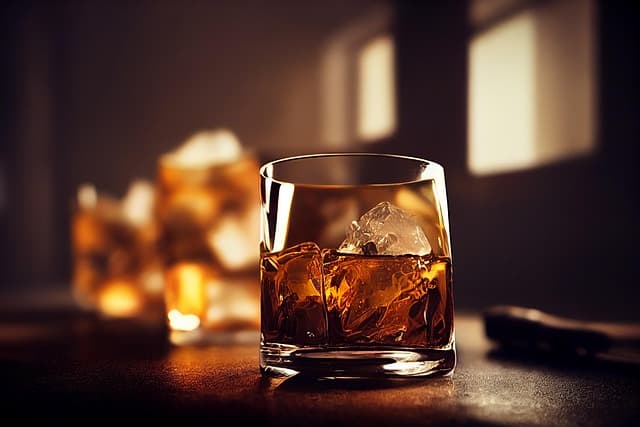Whiskey is more than just a drink; it’s a cultural phenomenon with a rich history, deep traditions, and an ever-growing appreciation across the world. Whether you’re a casual enthusiast or a seasoned connoisseur, the world of whiskey offers a journey through time, craftsmanship, and taste.
For those looking to immerse themselves in the fascinating world of whiskey, a visit to the Whiskey Museum is a must. Here, visitors can explore the origins of this beloved spirit, understand the intricate production processes, and even enjoy curated tastings that showcase whiskey’s diverse flavors. In this article, we’ll take you through the history of whiskey, the importance of distillation, and why a trip to the Whiskey Museum should be on your bucket list.
The Rich History of Whiskey
Whiskey’s origins date back centuries, with different regions claiming their stake in its development. While Ireland and Scotland are often credited as the birthplace of whiskey, historical records suggest that distillation techniques were practiced in ancient Mesopotamia before making their way to Europe.
The Birth of Whiskey
The word “whiskey” comes from the Gaelic term uisce beatha, meaning “water of life.” The earliest documented evidence of whiskey production in Ireland dates back to 1405, while Scotland’s first official record appears in 1496. Monks initially distilled whiskey for medicinal purposes, believing it had healing properties. Over time, it evolved into a popular drink enjoyed at social gatherings and celebrations.
Whiskey’s Global Expansion
As whiskey gained popularity, its production spread across the world. The Irish and Scottish immigrants carried their distillation knowledge to North America, where bourbon and rye whiskey emerged as distinctive styles. Today, whiskey is produced in various countries, including Japan, Canada, and even emerging markets like India and Taiwan, each adding their unique touch to the craft.
The Art of Whiskey Making
A key highlight of the Whiskey Museum experience is understanding the meticulous process behind whiskey production. Every step, from ingredient selection to aging, plays a crucial role in shaping its final flavor profile.
The Ingredients
The core ingredients of whiskey are simple: water, grains, and yeast. The choice of grain (barley, corn, rye, or wheat) significantly impacts the taste. For example, Scotch whisky primarily uses malted barley, while bourbon must contain at least 51% corn, giving it a sweeter profile.
The Distillation Process
Distillation is the heart of whiskey production. The process involves heating the fermented grain mash in copper pot stills or column stills to separate alcohol from water and impurities. The resulting spirit is then aged in wooden barrels, which add depth and character to the whiskey over time.
The Role of Aging
Aging is one of the most defining aspects of whiskey production. The spirit is stored in oak barrels, where it interacts with the wood, extracting flavors like vanilla, caramel, and spice. The longer the whiskey ages, the more complex its taste becomes. Different types of barrels, such as American oak or sherry casks, influence the final product’s flavor profile.
Why Visit the Whiskey Museum?
A visit to the Whiskey Museum offers a one-of-a-kind experience, blending history, education, and sensory exploration. Here’s why every whiskey lover should make the trip:
1. Immersive Exhibits
The museum provides an engaging journey through whiskey’s history, from its ancient roots to modern-day innovations. Interactive exhibits showcase historical artifacts, old distillation tools, and the evolution of whiskey branding.
2. Whiskey Tasting Sessions
No whiskey experience is complete without a guided tasting session. The museum offers expertly curated tastings where visitors can sample different styles of whiskey, understand flavor nuances, and learn the best ways to savor their drink.
3. Behind-the-Scenes Insights
Gain exclusive insights into whiskey-making from industry experts. Visitors can learn about the science of distillation, the importance of barrel aging, and even how climate influences whiskey’s character.
4. A Unique Souvenir Shop
The museum’s gift shop features a collection of rare and exclusive whiskeys, along with unique whiskey-related souvenirs. Whether you’re looking to expand your personal collection or find the perfect gift for a whiskey lover, this is the place to shop.
5. Whiskey Masterclasses
For those eager to deepen their knowledge, the museum offers masterclasses led by whiskey connoisseurs. These sessions cover whiskey pairing techniques, cocktail crafting, and in-depth discussions on different whiskey styles from around the world.
Conclusion
Whiskey is more than just a drink; it’s a legacy passed down through generations. Understanding its history, production, and artistry enhances the appreciation of every sip. Whether you’re a casual drinker or an aficionado, the Whiskey Museum provides an unforgettable experience that celebrates this timeless spirit.
From exploring whiskey’s origins to indulging in expertly crafted tastings, a visit to the museum offers an immersive journey into the world of whiskey. So, if you’re looking to elevate your whiskey knowledge and experience, make sure to add the Whiskey Museum to your travel list!
